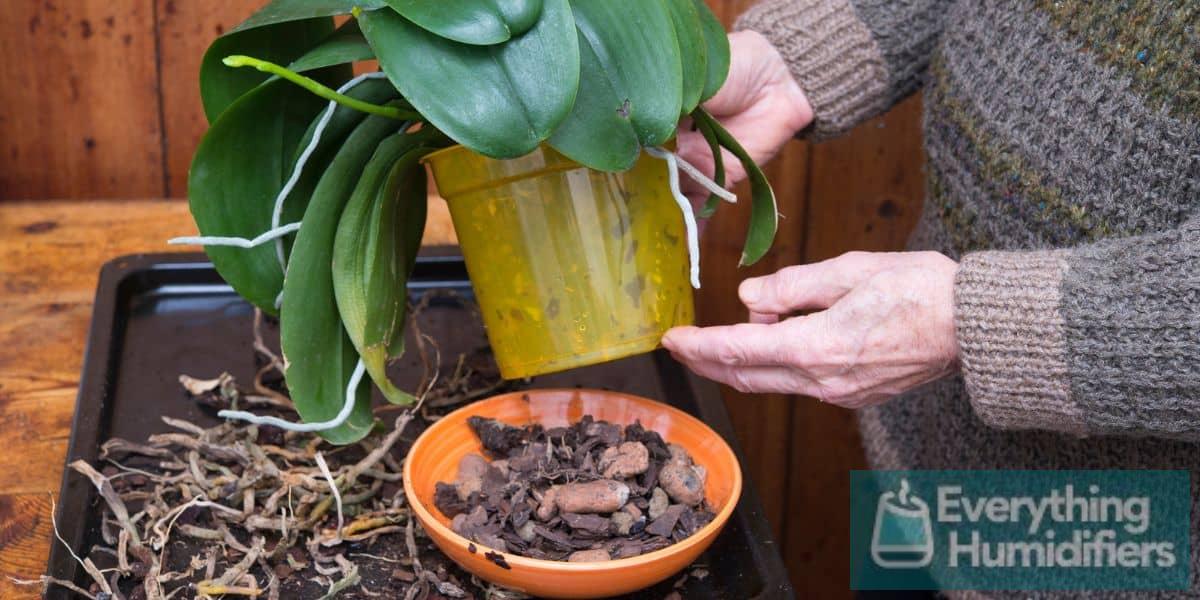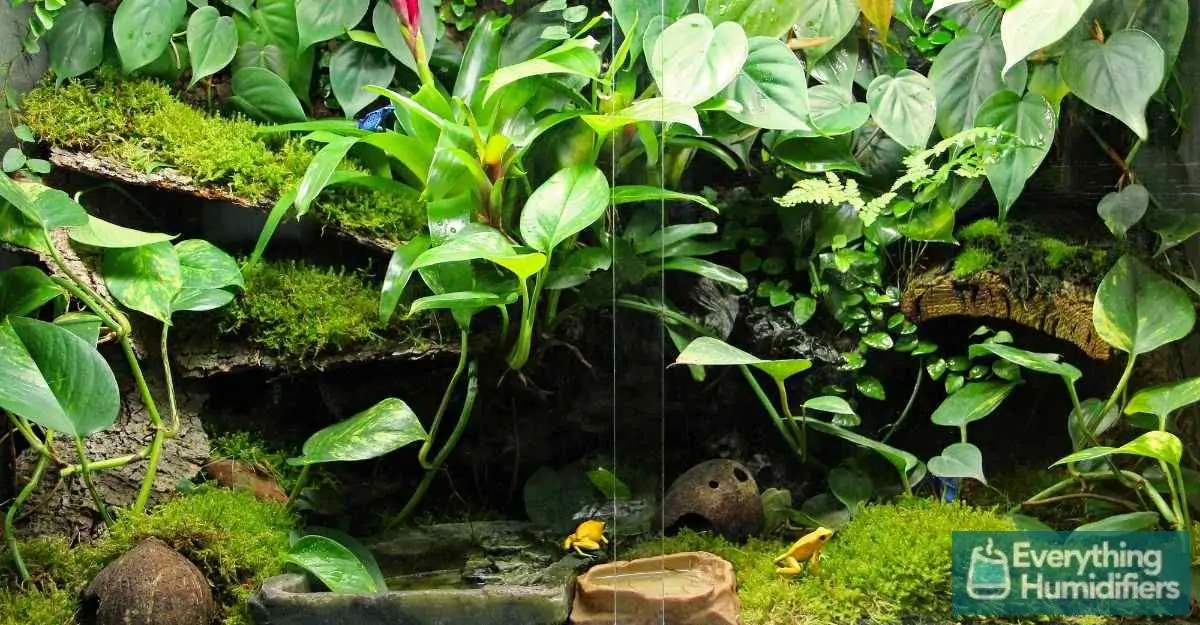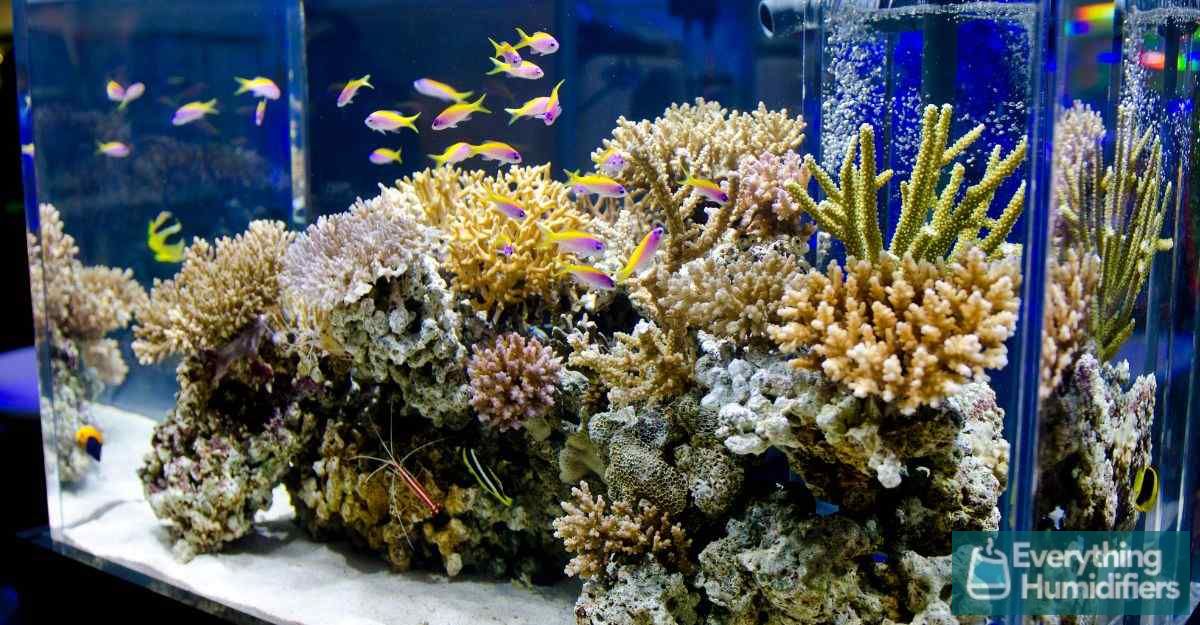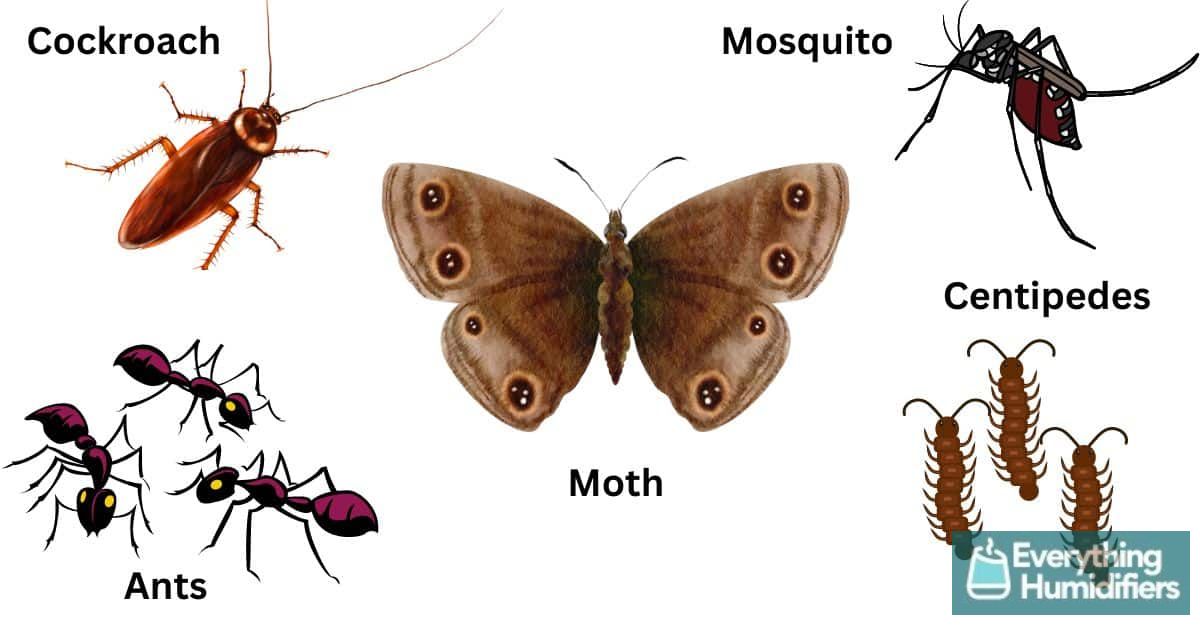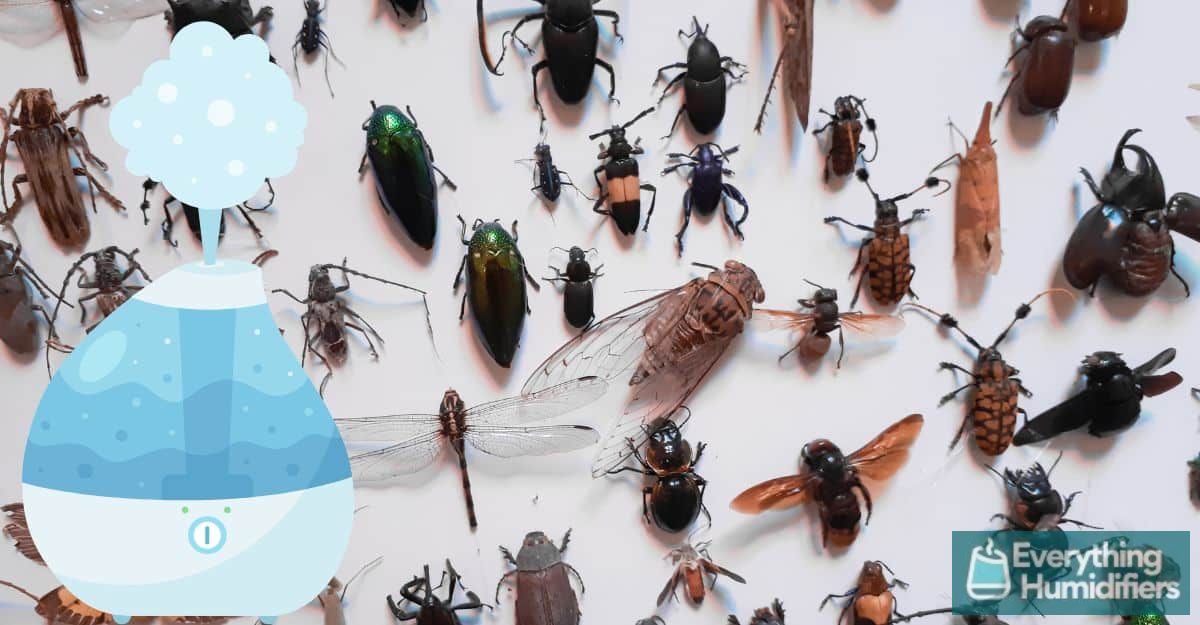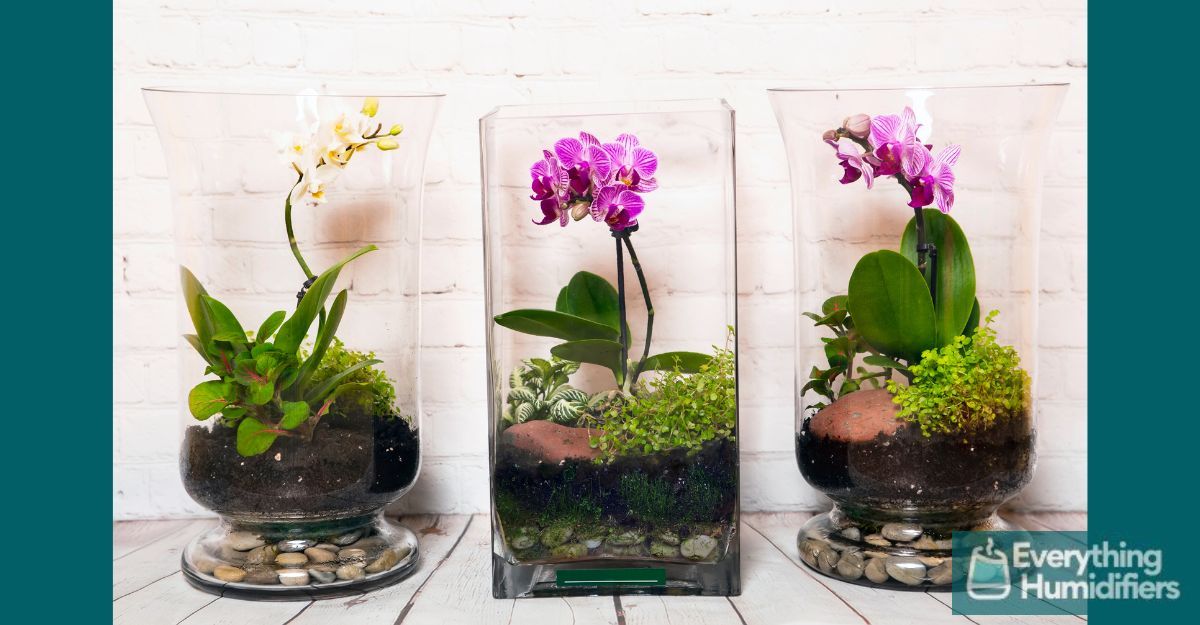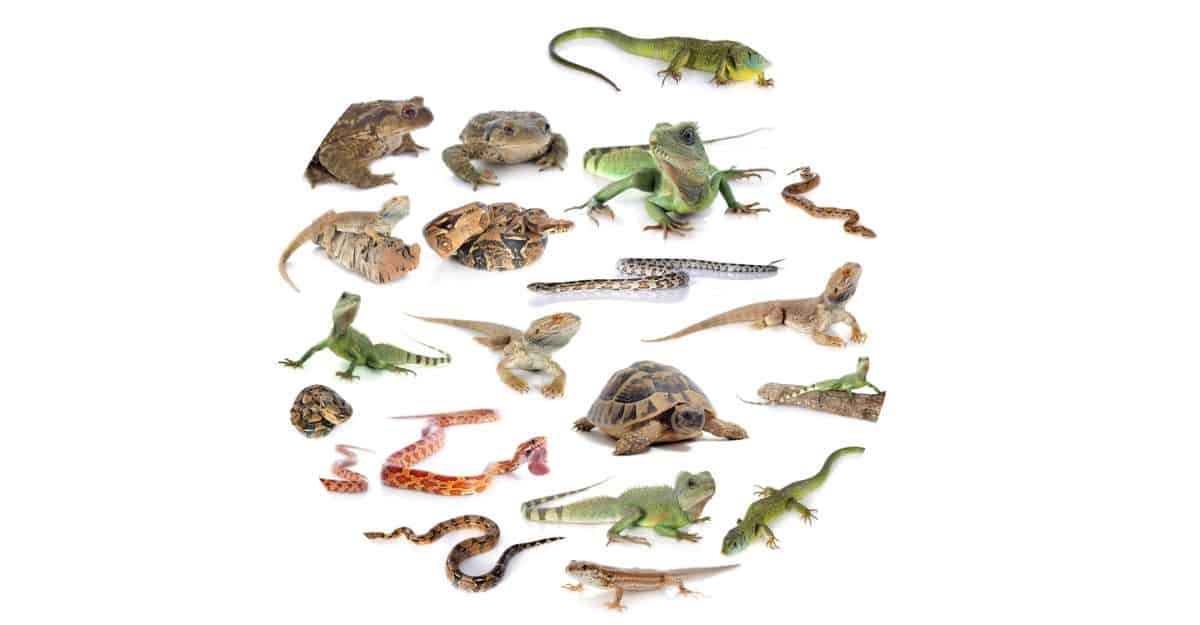They do, to a point. The effectiveness will depend on the size of your plants, the type of orchids, the size of your indoor garden, and the natural humidity levels in your home.
Orchids are stunning plants to grow in an indoor garden. However, they require some patience, knowledge, care, and TLC. Most of all, they need high humidity levels.
Orchids thrive in luxurious tropical and cloud forests with high humidity and warm, moist air. To grow orchids at home, you must recreate high-humidity conditions for them to flourish.
Humidity trays are shallow water trays that can be placed underneath plants like orchids and ferns to increase the humidity levels in the immediate vicinity. As the water evaporates, vapor enters the air, and humidity increases.
There are several factors to consider if they will be effective for your orchids.
Let’s learn more about humidity trays with orchids.

What are Humidity Trays, and How Do They Work?
Humidity trays are shallow trays that are placed underneath potted plants. They are usually used indoors for plants that grow naturally in regions with higher humidity than in a home or office environment.
The shallow tray can be filled with small pebbles, stones, or marbles and then filled with water to create an attractive plant base. As the water evaporates, the humidity in the immediate area around the plant will increase.
The plant is usually placed on the rocks to benefit from the evaporating moisture. Doubling as a drip tray for excess after watering.
Remember not to place your plant near or directly in the water, as this will create a situation where the roots are permanently wet. This will cause root rot, and your plants may die.
You can also use a tray insert to keep the roots above the water level. These neat inserts are placed inside your pot and keep the soil and roots above its base so they are not directly in the water.
Different types of humidity trays
Depending on your budget and décor theme, you can choose from various humidity trays available.
Simple plastic or metal trays
These are straightforward and very cost-effective. The shallow trays come in a variety of colors and sizes. A tray insert can be added to sit the orchid on, so it is not sitting in water. Very easy to clean.
DIY trays
If you get creative, you can make your own trays using ceramic, pottery, old containers, glass fish bowls, ice cube trays or even baking trays.
Fill them with pebbles, moss, or small ornaments. Make a striking design that have your guests talking.
Self-watering humidity trays
These trays have a water reservoir and a wicking system in the form of a mat that keeps the soil evenly moist.
Depending on the size of the tray and the conditions in your indoor garden, your soil can remain moist for days or even weeks.
The trays can be filled with water and left alone. Self-watering trays are great for busy people who don’t have time to check on their pebble trays daily or to keep their orchids happy while on a short vacation.
Automatic watering valve tray systems
These systems allow you to set up a maintenance-free system with a tray, pots, and a water supply.
The Smart Valve is activated by a non-powered moisture and humidity sensor and feeds water into the system as required to maintain a desired humidity level. It’s also great if your orchid prefers consistency.
What are the benefits of a humidity tray for orchids?
Because your orchids grow better in high humidity! A humidity tray offers many benefits:
| Benefit | Why is this Good |
|---|---|
| Orchids flower naturally | Orchids growing in the correct humid conditions will blossom naturally. |
| The plant won’t dehydrate | Dehydrated orchids will dry out, wilt and die. |
| Discourages pests | High humidity prevents pest infestations such as spider mites, mealybugs, and scale insects. These pests thrive in dry conditions and can quickly attack a plant. |
| Your plant won’t suffer from stress | When faced with low humidity for long periods, orchids will become stressed. Stressed orchids will drop their leaves prematurely. |
| Roots are healthier | When the roots of an orchid become dry and brittle, they cannot absorb moisture, and your plant will eventually die. Humid environments ensure that the roots are moist and the plant will have a healthy growth rate. |
| You won’t have stunted growth | Orchids that grow in low-humidity regions show signs of minimal growth and never reach their full potential. A humidity tray will add moisture and prevent this. |
Many new gardeners ask – Will a humidity tray or pebble tray prevent my plant from getting root rot? The answer is No; pebble trays do not cause or prevent root rot. Root rot is caused by water not draining out of your pot. A humidity tray also acts as a drain tray for any excess water to drain into.
So, to prevent root rot, you must ensure that you use recommended orchid soil that allows for drainage and that your pot has unobstructed drainage holes.
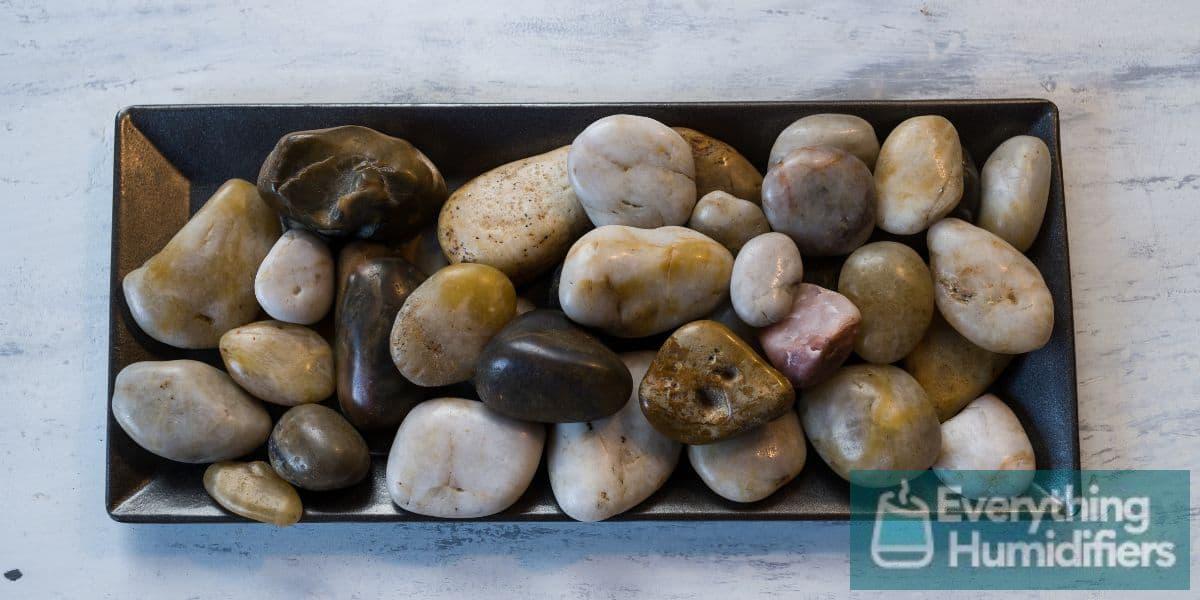
How to make a DIY Orchid Humidity Tray
It is easy to make a humidity tray. Follow these easy steps.
Choose your Tray
- You can buy a tray or find a suitable container at home.
- The tray should be shallow, around 3 to 4 inches deep.
- Trays can be metal, plastic, glass, ceramic, perspex, or porcelain.
- Don’t use wood, as it will rot when filled with water.
- Ensure that the size of your tray is wider than the leaf span of your plants.
Wash the Tray Well
- Remove all debris if the tray has previously been used for other purposes.
- Wash your tray with warm, soapy water, a solution of water and vinegar or Physan 20.
- Dry the tray well with a clean cloth.
- Place the tray in its permanent spot.
Choose your pebbles
Pebbles are used mainly for decorative purposes.
You can use
- small rocks
- pebbles
- marbles
- glass gems
- lava rocks
- polished river rocks
- decorative stones
To create a distinctive look, you can also mix and match them.
You can also use a container with a mesh covering or open lid that will support the plant as an alternative. This may make for less time-consuming cleaning if that is important for you.
Wash the stones
Wash the stones to remove any dust or debris.
- Fill a container with water and mild dish soap.
- Soak the stones for 10 to 15 minutes.
- Rinse the stones with clean water.
Now, you can sterilize them
- 1 part household bleach to 9 parts of water for 10 to 15 minutes. This will kill any bacteria or fungi lurking in crevices.
- Rinse the stones to remove any trace of the bleach.
- Allow them to air dry.
Alternatively, Physan 20 is a broad-range disinfectant that is EPA-approved for use directly on plants and their pots; it is biodegradable and environmentally friendly and can also be used to prevent orchid rot.
Put the Stones into the Tray
- Place the stones into the tray
- forming an even layer that fills up to 3/4 of the depth of the tray.
Add Moss to your Tray
This is optional. Moss can look aesthetically pleasing and absorb water, adding to the humidity. Spaghnum moss is a popular choice as it is readily available at nurseries.
- Wash the moss well to remove any dirt or debris.
- Get creative and place clumps of moss on top of the pebbles.
Add water
- Now, add water to the tray.
- Do not submerge the stones.
- Fill the tray so the water level is below the top of the rocks.
Place your orchids
- Carefully position your orchids in their pots on top of the stones.
- Ensure that they are stable and won’t topple over.
- Don’t be tempted to push the pots down into the water. They should rest on the stones above the water level.
- This may be tricky if your stones are uneven. Try to move stones around to create an even surface for your pots.
Stand back and admire!

Can I add fertilizer to the water in my orchid humidity tray?
The simple answer is No, it is not necessary! Let’s look a bit closer.
Orchids can be grown in two ways:
Method One
The first is as an epiphyte without the need for soil. The plant is usually placed into a container filled with water, and the roots absorb nutrients from the water. These containers are seldom put into humidity trays as the water naturally adds humidity to the air around the plant.
Here is an interesting article on epiphytes from the University of Florida.
Method Two
The second method is potting the plant into orchid soil, allowing nutrients to be absorbed from the soil by the roots. Humidity trays are ideal for potted orchids. Because the pot stands above the water line, the roots will never enter the water. Putting fertilizer into the water will be of no benefit to the plant.
If you want to fertilize your orchids in the humidity tray, apply the fertilizer directly to the soil per the manufacturer’s instructions.

How to maintain your humidity tray
Humidity trays can become breeding grounds for mold and bacteria. Because they are wet, warm, and offer a food source, mold colonies will flourish in your trays.
- Plan on cleaning your tray once every two weeks.
- Wash the tray and the stones with warm water and vinegar or your alternative preferred plant disinfectant to remove mold and mildew.
- Rinse with clean water and rebuild your display.
- You can take this opportunity to water or fertilize your orchids and remove any dead or dropping leaves.
- Mineral scale from tap water won’t accumulate if you use distilled water. It will also prevent mold from growing.
- Always keep your humidity tray adequately filled with water, as a dry tray cannot effectively add moisture to the air.
- Additionally, dry trays can accumulate dust and debris and become unattractive.
To prevent mold growth in the tray, you can add hydrogen peroxide to the water.
- Use one part food-grade hydrogen peroxide to ten parts water and replace the solution every few days.
If the mold persists, consider using a purchased fungicide like Physan 20 from your local nursery.
It is important to note that you should not mix bleach(hydrogen peroxide) with vinegar or fungicides. If switching from one chemical to another, rinse thoroughly to avoid unwanted chemical reactions.
On one forum I was reading, someone mentioned using a small piece of copper wire in the water to deter mold. I’ve yet to try it out, but I will let you know how it goes when I do. If you have tried this method, any helpful feedback would be great.
How do I prevent mosquitos breeding in a pebble tray?
Mosquitoes are attracted to standing water; your humidity tray should not become a breeding ground for these insects!
You can purchase an eco-friendly insect repellent, or you can buy natural oils. Plant oils like eucalyptus, citronella, peppermint, catmint, and rosemary extract will repel mosquitoes. Simply put a few drops into the water. Or you can companion plant the herbs nearby.
Most orchids are amenable to a breeze, so having air circulation near the tray may help the water vapor move around more while providing water movement to prevent the mozzies.
What type of orchids benefit from humidity trays?
More miniature orchids that can grow in a pot are ideal for humidity trays. You can try:
- Cattleya Orchids also known as corsage orchids
- Brassia Orchids have lovely spider-like sepals
- Cymbidium Orchids have numerous smaller flowers
- Vanda Orchids come in endless color varieties
- Encyclia Orchids also known as cockleshell orchids
- Miltonia Orchids look like garden pansies

How to Find out your Current Humidity level
The humidity in an average home is between 40% to 60%.
Most orchids require a higher humidity of around 50% to 80%.
As a home gardener, you must increase the moisture and ensure consistency for your orchids to perform at their best.
You can quickly check the humidity near your orchids with a humidity meter (hygrometer) before and after you add the tray to see if the humidity increases by the amount you need.
Of course, your orchids will be the best test of all, as they will thrive and be happy and healthy once they have the right conditions.
If the humidity tray cannot increase the humidity enough, there are other ways to add more moisture to the air below.

Other ways to increase humidity for orchids
Use a Mist Spray
Misting will add water vapor to the air and increase humidity.
It is, however, a labor-intensive job that won’t suit everyone.
Mist an orchid every 2 to 3 days and avoid spraying the flowers.
Plant Orchids in a Terrarium
Certain species like Phalaenopsis and some varieties of Dendrobium, which need high humidity, minimal space, and indirect light, can flourish in indoor terrariums.
Installing a Humidifier is a Great Choice
Installing a humidifier may be a better option if you need to maintain humidity at high levels for long periods. A humidifier can be set to a specific humidity level and will turn itself on and off to maintain that level with no effort on your part other than to fill the tank with water (preferably distilled water).
They are quiet, decorative, and ideal for indoor applications. The humidity will permeate the entire room from floor to ceiling and won’t be located only around the base of the plant. Smart humidifiers can even alert you when they need a water refill.
To learn more about orchids and humidity, read this article.

Frequently Asked Questions
How do I make a humidity tray for my orchids?
You can make a humidity tray by using a shallow tray and filling it with gravel or pebbles. Then, add water to the tray, ensuring that the water level is below the top surface of the gravel. Finally, place your orchid pot on top of the gravel, ensuring it doesn’t sit in the water.
Why should I use a humidity tray for my orchids?
Using a humidity tray can help to create an environment with increased humidity around your orchids, mimicking their natural habitat. This can be especially beneficial if you live in a dry climate or the indoor humidity levels are too low for your orchids.
How does a humidity tray increase the humidity around orchids?
A humidity tray works by providing a source of water that evaporates, increasing the humidity level around the orchid pot. This can create a more suitable microclimate for your orchids, especially if the indoor air is dry.
Are there any orchids that don’t benefit from using a humidity tray?
While most orchids prefer higher humidity levels, some orchids with specific care requirements may not benefit from a humidity tray. Larger orchids may benefit less because a tray’s humidity increase is limited to how far it will reach. It’s essential to research the specific needs of your orchid species to ensure that using a humidity tray is beneficial.

How often should I water my orchids using a humidity tray?
When using a humidity tray, it’s essential to monitor the water levels in the tray and ensure that the orchid pot does not sit in standing water. Water your orchids as needed based on their individual requirements, taking into account the presence of the humidity tray.
Can using a humidity tray lead to overwatering my orchids?
Using a humidity tray does not necessarily lead to overwatering if the water level is carefully monitored. It’s crucial to ensure that the orchid pot does not sit in water and that excess water cannot accumulate in the tray to the point where your orchid is sitting in water.
Can using a humidity tray benefit other tropical plants besides orchids?
A humidity tray can benefit other tropical plants by creating a localized area with slightly higher humidity levels. It can help plants that thrive in humid environments, such as ferns, bromeliads, and certain tropical foliage plants.
So, do humidity trays work for orchids?
Yes, humidity trays can effectively raise the humidity around orchid pots. They help create a microclimate with higher humidity levels, which benefits orchids.
Here are some points to consider:
While humidity trays add moisture to the air, they are not always effective in creating the perfect conditions you need.
Humidity trays should not be used in place of watering. They are an excellent supplemental method to increase humidity but should be one of many water sources for your plant.
Depending on the conditions in the room, humidity from a tray may only reach a few inches into the air. This makes them more suitable for smaller rather than larger plants. If you have tall orchids, you may get a partial benefit of humid air at the lower end of the plant.
For orchids requiring exceptionally high humidity of 70% or more, a humidity tray probably won’t be able to maintain these levels without additional systems. Installing a humidifier will guarantee the perfect conditions for instaworthy orchids.
Additional Resources
I am not an orchid expert, but it is fascinating how much of a part humidity can play in helping these beautiful plants look their best.
Since every area varies so much with humidity levels, finding orchid growers or associations in your area would be an invaluable help in determining if humidity trays are a good solution for your orchids. Search for your location from one of the websites below:
- has over 400 local affiliated societies worldwide.
- has a List of Affiliated Societies with Society Links
- has links to orchid societies around the world by region.
Video: Humdity Trays from Orchideria
Here is an excellent video from Orchideria that shows how to make a humidity tray and how to maintain and clean it.























